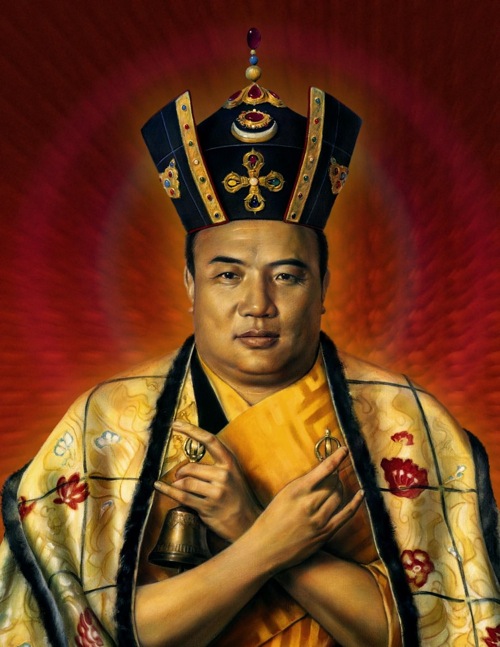

It is a daily practice and is sung in Tibetan after public meditation sessions. This particular text was composed by the Eighth Karmapa Mikyö Dorje (1507–1554). This short invokation of the central protector of the Karma Kagyu school, Black Coat (Skt.

Translation: ’The Guru Yoga in Four Sessions’Ĭommentary: Karma Chagme Rinpoche (1603-1678) Karme Khenpo Shamar Rinpoche, Samye Ling, Scotland, 1982 Sherab Gyaltsen Rinpoche, Immenstadt Germany, 2009. Tibetan source: Collected Works of the 8 th Karmapa, Mikyo Dorje (1507-1554), Treasury of Instructions (gDams ngag mdzod) by Jamgon Kongtrul Lodrö Thaye (1813-1899) It is used after having completed the Four Foundational Practices. The practice is one of the main devotional practices of the Karma Kagyu Lineage and was composed by the Eighth Karmapa Mikyö Dorje (1507–1554). This is a ‘Meditation on the Lama’ also known as ‘The Guru Yoga in Four Sessions’ (Tib. Translation: ’Filling Space to Benefit Beings’Ĭommentary: Dro dön kha jab may zin dri nyung dü from Maniwa Sherab Gyaltsen Rinpoche, Bath, UK 2009 8th Karmapa Meditation Tibetan source: Dro dön Kha khyab ma, Composed by Thangtong Gyalpo (~1385–1464) It is practiced according to the instruction given to Hannah and Lama Ole Nydahl by Kalu Rinpoche in Sonada in 1970. Chenrezig) manifest to help beings everywhere and represent the widest expression of kindness on the beyond-personal level. This meditation text was composed by the 12th Century Siddha Thangtong Gyalpo “King of a Thousand Valleys” (1361-1485). He frequently advised people to specifically develop this quality. No character trait is finer than compassion, and the Buddha was very conscious of this. Translation: ‘Ocean of the Definitive Meaning of the Great Seal’, 9 th Karmapa Wangchuk Dorje(1556-1603)Ĭommentary: Torch of Certainty by the First Kongtrul Lodrö Thaye (1813-1899), Kalu Rinpoche Sonada India 1970-71, Sherab Gyaltsen Rinpoche, Becske Hungary 2008 Loving Eyes Meditation Tibetan source: Phyag chen nges don rgya mtsho Read more about the Four Foundational Practices here. Dorje Sempa) (3) Mandala Offerings and (4) Meditation on the Lama. The four practices are: (1) Taking Refuge and Developing the Enlightened Attitude (2) Diamond Mind Meditation (Skt. They are a translation of a meditation text known as ‘The Vehicle for the Path of the Supreme’, composed by the Ninth Karmapa, Wangchuk Dorje(1555-1603), taken from his ‘Great Treatise of the Instructions of the Great Seal’.

Involving many repetitions, they create strong positive imprints, making one unshakeable.

Mahamudra) as they lay the basis for realising the true nature of mind. Ngöndro) are also known as the preliminary practices of the Great Seal (Skt. Translation: The Rain of Nectar Ripening the Seedlings of the Four Buddha StatesĬommentary: Explanations given by the 16th Karmapa originally in Tsurphu, Tibet, 1957, and USA 1980. Tibetan source: 16th Karmapa Rangjung Rigpe Dorje (1924-1981) Tibetan name: Ku shi nyu gu kye je du tsi char gyun Click here for an interview with Lama Ole Nydahl on the 16th Karmapa Meditation. It is the basic practice of Diamond Way Buddhism. The emphasis is on actively continuing the pure view, obtained in meditation, into daily life. The 16th Karmapa made Hannah and Lama Ole Nydahl the holders of this practice, with the wish that it is always keep fresh and on the cutting edge of western minds. Lami Naljor) is a practical and comprehensive tool for enlightenment which was composed the 16th Karmapa Rangjung Rigpe Dorje. This form of ‘Meditation on the Lama’ (Skt. These are the very traditional meditation practices used in Diamond Way Buddhist Centres, together with references to their Tibetan Sources.


 0 kommentar(er)
0 kommentar(er)
